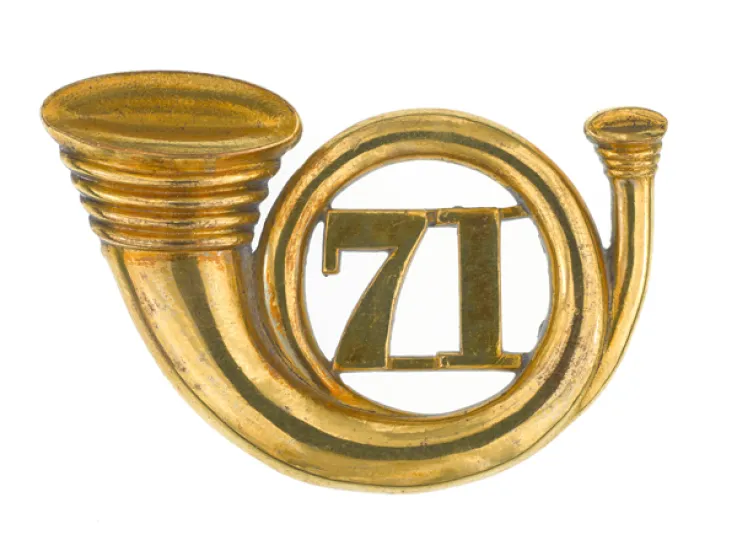Explore more from Regiments and Corps
52nd (Oxfordshire) Regiment of Foot (Light Infantry)
4 minute read
Origins
In December 1755, on the eve of the Seven Years War (1756-63), Britain needed more soldiers. One of the new infantry regiments raised that month was the 54th Regiment of Foot.
By the time it was sent on its first deployment to Ireland in 1758, the unit had risen to 52nd in the order of precedence. It stayed in Ireland until 1765, before moving to Canada, surviving a shipwreck off the coast of Nova Scotia en route.
American War of Independence
In 1774, the 52nd Foot moved to Boston, placing it in the front line on the outbreak of the American War of Independence (1775-83). The regiment suffered so badly in the ensuing campaigns that its few survivors had to be drafted to other regiments in 1778, while its officers returned to England to re-recruit.
The re-formed unit gained a county affiliation with Oxfordshire in 1782.
Service on the subcontinent
The regiment remained in England until 1783, when it deployed to India. There, it served in the Second and Third Mysore Wars (1780-92) and also at Pondicherry in 1793 and on Ceylon (now Sri Lanka) in 1795.
It landed back in Britain in 1798, raising a 2nd Battalion the following year. Both battalions were then immediately sent on raids along the Spanish coast.
Light infantry
In 1801, General Sir John Moore became the regiment’s colonel. Later that year, he nominated 1st Battalion for an experiment in training line infantry to operate in a light infantry role as well. This made the 52nd Foot the first-ever British regiment to do so.
Napoleonic Wars
In 1803, 2nd Battalion became an independent unit as the 96th Regiment of Foot. A year later, the 52nd (Oxfordshire) Regiment of Foot (Light Infantry), as it was now known, raised a new 2nd Battalion. This one lasted until 1815, fighting at Copenhagen (1807), in the Peninsula (1808-09 and 1811-12), on the Walcheren Expedition (1809), as well as in Flanders (1813-15).
Meanwhile, 1st Battalion was sent to Sicily (1806), Sweden (1808) and also fought in the Peninsular War (1808-14). So often was the battalion chosen to lead storming parties in the Peninsula that its colonel granted survivors of these dangerous assaults an arm badge showing a laurel wreath and the letters ‘VS’ for ‘Valiant Stormer’.
In 1820, the regiment instituted Forlorn Hope Medals, awarded to personnel who had participated in the sieges of Ciudad Rodrigo, Badajoz or San Sebastian. The 52nd Foot is believed to be unique in issuing medals for these attacks.
At Waterloo in 1815, 1st Battalion took part in the charge that finally broke the French Imperial Guard and was the largest British battalion involved. In November 1818, it became the last British battalion to leave France at the end of the Allied occupation.
Victorian period
In 1824, the regiment was sent to Canada for seven years, followed by six years’ home service and a year in Gibraltar. In 1838, it began four years in the West Indies, before another six years in Canada from 1842.
It returned to India in 1853 and fought against the Mutiny (1857-59) there four years later. This service included the Siege of Delhi (1857).
Legacy
The regiment returned to England in 1864 and its final independent overseas posting was to Malta in 1868. In 1881, it was merged with another light infantry unit, the 43rd (Monmouthshire Light Infantry) Regiment of Foot, to become The Oxfordshire Light Infantry.
Regimental museums
The National Army Museum works with a network of Regimental and Corps Museums across the UK to help preserve and share the history and traditions of the Army and its soldiers.
Discover more about the 52nd (Oxfordshire) Regiment of Foot (Light Infantry) by visiting the Soldiers of Oxfordshire Museum in Woodstock.













